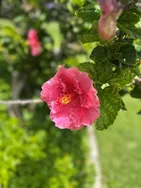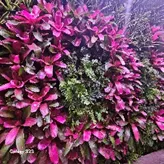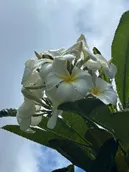Blog by Nancy Forrest
I recently had the pleasure of taking a trip to Maui. The scenery was breathtaking; the weather was perfect, and the food delicious. The fauna and flora were spectacular. Anyone who has been to the Islands and owns a Hawaiian shirt already knows this. There were 3 plants, in particular, that I liked the most: the hibiscus, the bromeliad, and the frangipani.
Hawaii’s State flower was the hibiscus, named in the 1920s. However, there was no variety named, which was confused with the “red one”, until 1988 when they chose the “yellow one” Hibiscus brackenridgei, as the official one. The yellow one is now considered an endangered species, which is why it is mostly seen in a variety of colors. The hibiscus symbolizes love, friendliness, and harmony. They are edible and used in leis.

In Hawaiian culture, bromeliads hold cultural significance beyond their decorative appeal. They symbolize love, respect, honor, and spiritual connections, fostering shared identity and cultural unity, making them meaningful gifts for various occasions. The Hawaiian Bromeliad Society International promotes bromeliad culture worldwide. At the Westin, there is an entire wall made out of the Neoregelia Bromeliad plant, of which there are over 56 varieties. Because they are so diverse and have different patterns, they are hybridized a lot . The plant typically grows in rosette form, mostly flat and spreading. Cups, called tanks, form in the center of this plant. Neoregelia bromeliad flowers emerge briefly from these tanks. They have guides on how to recognize these plants on the internet.

The Frangipani, also known as Plumeria alba, is a small to medium-sized tree with a spreading crown. It has a thick succulent stem, with green leaves and showy, large, fragrant white flowers with a yellow center. They come in various colors. It has deep meaning in the Hawaiian cultural. It was often used in religious ceremonies, where its flowers were offered to the gods as a sign of devotion and gratitude. The fragrant blossoms were used to adorn sacred spaces and altars, creating a serene and uplifting atmosphere. Over time, it became a popular adornment in everyday life. Hawaiian men and women would often wear the flowers behind their ears or weave them into leis. Hula dancers adorn their hair and costumes with these flowers, enhancing the visual appeal of their performances and connecting them to the natural beauty of the islands.

